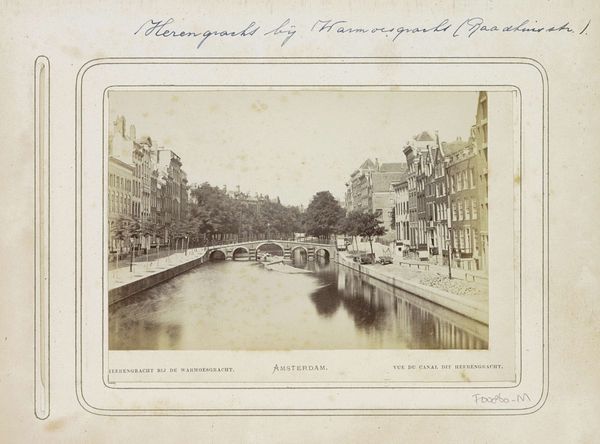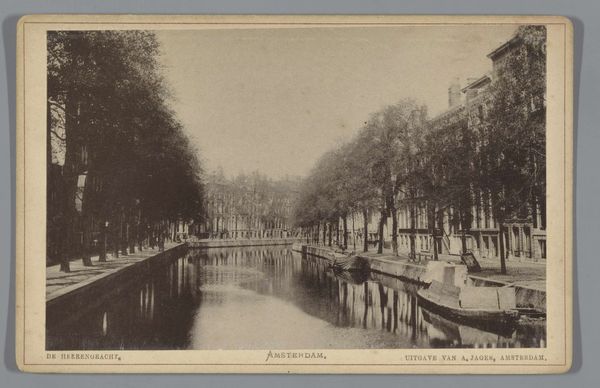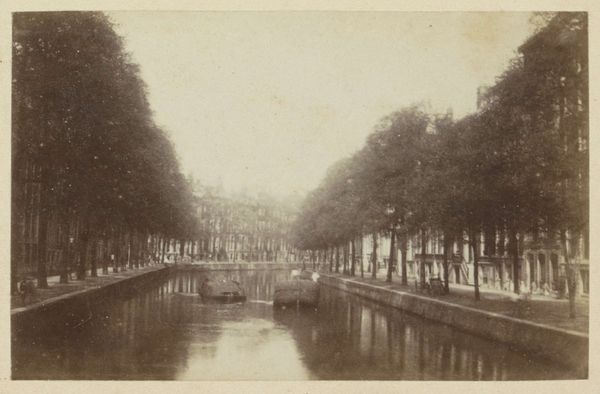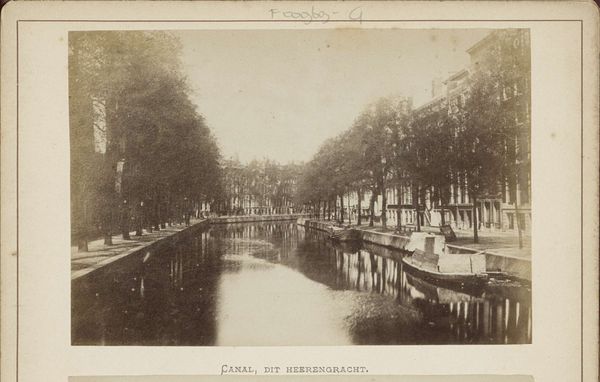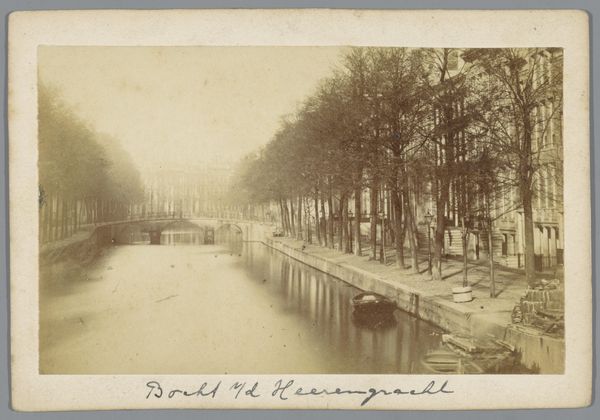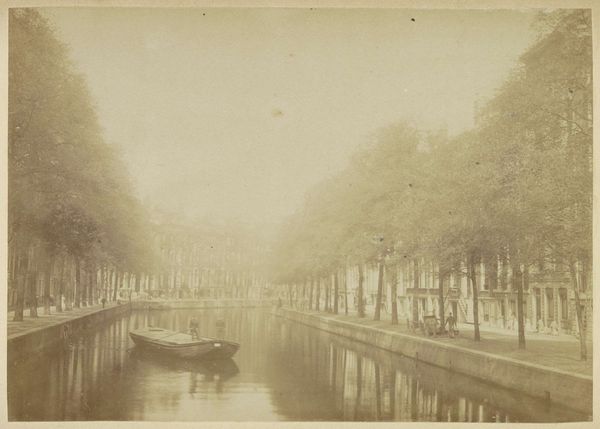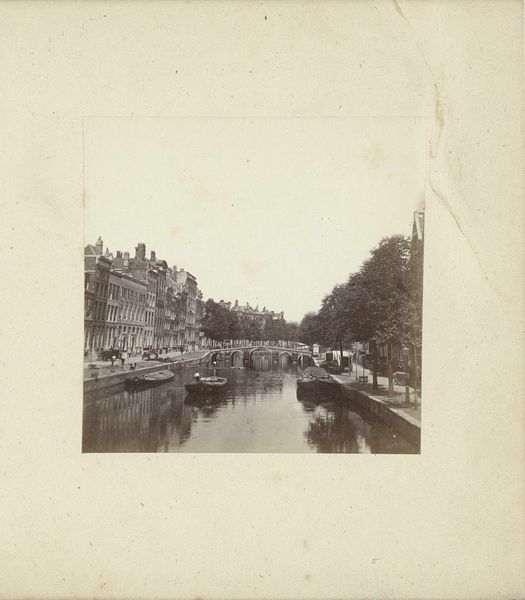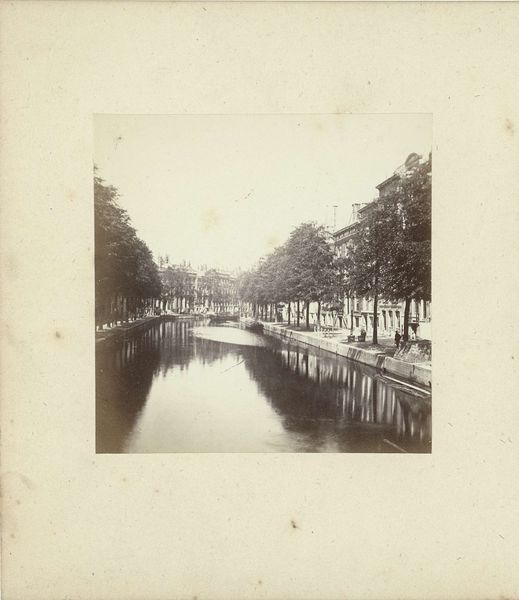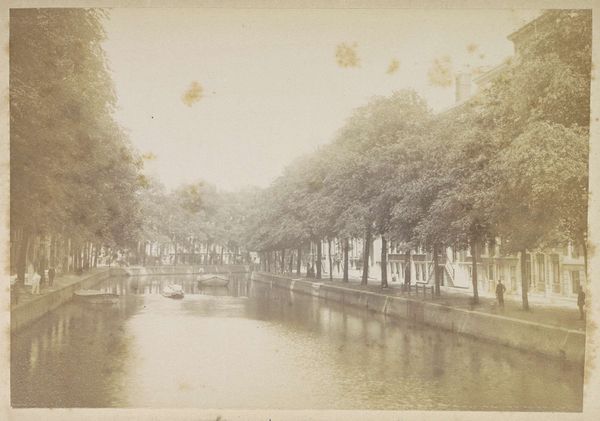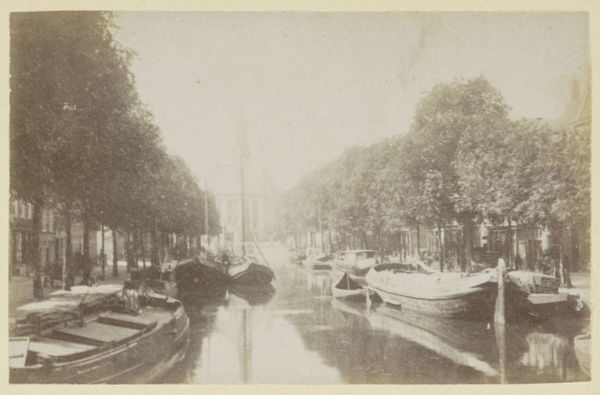
Bocht in de Herengracht ter hoogte van de Spiegelstraat (Gouden Bocht), gezien in westelijke richting 1860 - 1875
0:00
0:00
andriesjager
Rijksmuseum
photography
#
dutch-golden-age
#
landscape
#
photography
#
19th century
#
cityscape
#
watercolour illustration
Dimensions: height 107 mm, width 165 mm
Copyright: Rijks Museum: Open Domain
Editor: So, this is "Bocht in de Herengracht ter hoogte van de Spiegelstraat" – quite a mouthful! – taken between 1860 and 1875 by Andries Jager. It’s a photograph, showing a canal scene. I’m immediately struck by its serene and almost melancholic atmosphere. What do you see in this piece? Curator: I see a carefully constructed narrative of Dutch identity during a period of significant social and economic change. The photograph presents an idyllic view of Amsterdam, emphasizing the wealth and order of the "Gouden Bocht" (Golden Bend). But we must question: whose perspective is being represented? Whose stories are absent? Editor: That’s a great point. It does feel a bit… curated. Are you suggesting it's a form of propaganda? Curator: Perhaps "propaganda" is too strong. But consider the power dynamics at play. Photography, a relatively new medium at the time, was accessible primarily to the upper classes. This image reinforces a particular vision of Dutch prosperity, potentially masking social inequalities and the experiences of marginalized communities who wouldn't have a home here. What feelings might that omission provoke? Editor: So, while it’s beautiful, it's also presenting a selective reality. The photograph leaves out the less glamorous sides of city life at the time. Curator: Exactly. This photo becomes more complex when viewed as part of a broader dialogue about power, representation, and the construction of national identity. The absence speaks as loudly as what’s present. What did you get from your initial viewing? Editor: Initially, I saw a pretty cityscape. Now, I see a statement, intentional or not, about who belongs and who doesn’t. It shows one truth, rather than _the_ truth, and art must open us to multiple truths. Curator: Precisely! It shows the critical importance of approaching historical works with a questioning eye and understanding the multifaceted layers of historical context.
Comments
No comments
Be the first to comment and join the conversation on the ultimate creative platform.
